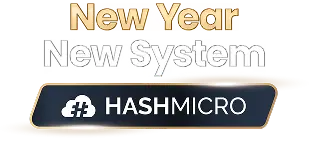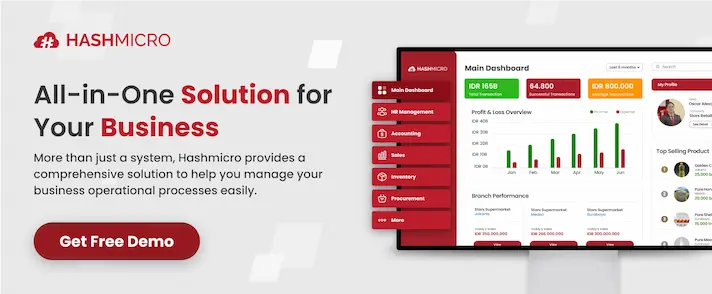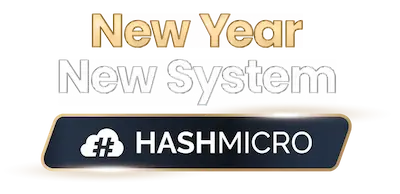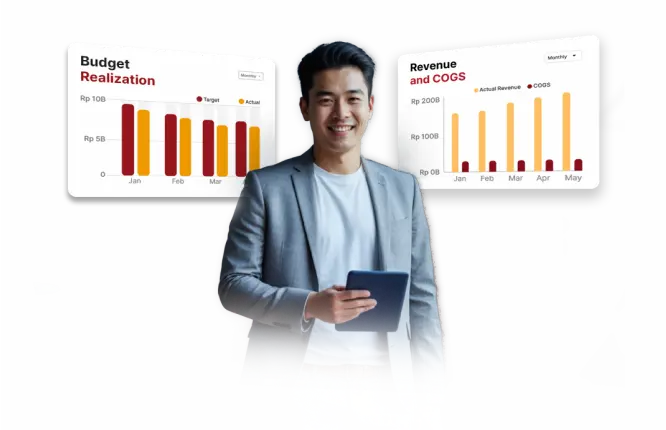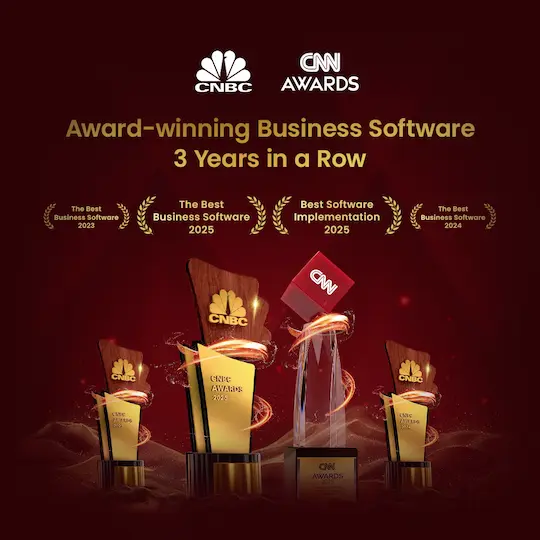Are you finding it challenging to accurately predict future sales or market trends for your business? Or perhaps you’re still not familiar with forecasting models and are often caught off guard by sudden changes, leading to missed opportunities or overstocking?
McKinsey reveals that firms that improved forecast accuracy by over 50% saw better operational decisions and financial results. Integrating real-world data with forecasting helps detect issues early, optimize resources, and drive long-term growth by adapting to market changes effectively.
Fortunately, forecasting models offer a powerful solution to these challenges. By leveraging historical data, these models help businesses predict future trends, behaviors, and outcomes, ultimately allowing for more informed decisions.
As many successful businesses have already experienced, forecasting models are key to guiding strategic decisions and streamlining operations. Want to know how you can leverage these models to enhance your business performance? Let’s dive into the different types and examples of forecasting models that can make a real impact.
Key Takeaways
|
What is a Forecasting Model?
Forecasting models are methods used by businesses to predict outcomes like sales, demand, and consumer behavior. These models are particularly valuable in sales and marketing, as they offer insights into future trends and help businesses plan effectively.
Essentially, forecasting models either use historical data and/or the knowledge of experts to project future events. By analyzing past patterns, businesses can anticipate demand, optimize inventory, and improve decision-making. These models provide a structured approach to understanding and preparing for potential future scenarios.
The choice of a forecasting model depends on the specific business need and available data. By selecting the right model, businesses can gain more accurate predictions, reduce risks, and make data-driven decisions to support growth and operational efficiency.
Four Types of Forecasting Models

There are numerous ways businesses can predict future outcomes, but four primary types of forecasting models are commonly used across industries. Each method offers unique insights that enhance decision-making and improve business practices. The 4 most common types of forecasting models are:
- Time series model
- Econometric model
- Judgmental forecasting model
- The Delphi method
To give you a clearer overview, here’s a quick summary of these models:
| Forecasting Model | Key Features | Best For |
| Time Series | Uses historical data to identify trends. | Predicting trends based on past behavior (e.g., sales, demand). |
| Econometric | Combines economics and statistical methods. | Analyzing economic variables (e.g., prices). |
| Judgmental | Relies on expert opinions when data is scarce. | Forecasting in uncertain or new market conditions. |
| The Delphi | Uses expert opinions in iterative rounds. | Long-term forecasting without historical data. |
Below, we’ll explore these methods in more detail to help you understand how they can be applied to improve business operations and customer experiences.
1. Time series model
The time series model uses historical data organized by time intervals (e.g., days, months, years) to predict future outcomes. This model helps businesses identify trends, such as sales patterns or demand fluctuations, based on past behavior.
To create a time series forecast, input time-based data into a forecasting tool like a spreadsheet. Methods like moving averages smooth short-term fluctuations, while exponential smoothing gives more weight to recent data, making it ideal for short-term forecasting.
Other techniques related to the time series model include trend projection, which identifies long-term patterns, and straight-line modelling, used for consistent behaviors like depreciation. Time series models assume that future trends will resemble past patterns, helping businesses plan for future demand and optimize operations.
2. Econometric model
The econometric model blends economics, mathematics, and statistical methods to predict future economic outcomes, such as supply and demand, inflation rates, or GDP growth. This model is particularly useful for businesses looking to forecast trends based on key economic indicators.
To build an econometric model, first identify your independent and dependent variables. For example, you might ask, “How does product price influence consumer demand?” Consider other factors, like customer income or competitor pricing, which could also impact demand.
Once you’ve gathered the relevant data, plot it to detect anomalies or outliers. Then, assess whether the relationship between the variables is linear, quadratic, or non-linear. After that, apply the appropriate statistical methods to determine the effect of price on demand and evaluate its significance.
Econometric models are frequently applied in business for price optimization and revenue forecasting. For instance, a company may use this model to examine how different pricing strategies impact demand, predict changes in market share, and refine resource allocation for marketing efforts.
3. Judgmental forecasting model
The judgmental forecasting model relies on subjective, intuitive information to make predictions, particularly when data is unavailable or unreliable. This method is valuable when launching new products or navigating unpredictable market conditions.
Unlike data-driven models, judgmental forecasting involves expert opinions and assumptions about certain variables. While it lacks the precision of statistical models, it improves as more information becomes available, offering insights into situations where quantitative data is scarce.
For example, in research and development, judgmental forecasting helps gather insights from focus groups or expert panels. These insights, which no automated model could provide, assist companies in making informed decisions about product features or strategies.
While judgmental forecasting has limitations, it plays an essential role in scenarios that require human expertise and intuition. By combining this model with data-driven approaches, businesses can balance accuracy with the nuanced understanding provided by experts.
4. The Delphi method
The Delphi method is a qualitative forecasting model that relies on expert opinions to predict future trends or events. It’s commonly used when historical data is unavailable, making it especially useful for forecasting in innovative industries like healthcare, AI, or renewable energy.
This method involves multiple rounds of questioning where a panel of experts anonymously provides their forecasts. After each round, the experts review feedback from other participants, refining their predictions based on new insights. The process continues until consensus is reached.
One of the main advantages of the Delphi method is that it pools the wisdom of multiple experts, reducing the bias that might come from a single individual. Additionally, the controlled feedback loops help improve the quality of information with each round.
The Delphi method is ideal for long-term forecasting and predicting outcomes in uncertain environments. By gathering expert insights and refining them over time, businesses can gain valuable predictions, particularly in areas where traditional data is limited.
Using the right forecasting model provides valuable insights, but it’s the integration with your overall operations that truly unlocks the benefits. HashMicro’s software brings forecasting and inventory management together for streamlined efficiency. Check the banner below for pricing details and find out how to apply for the CTC 70% grant.
Examples of Forecasting Models

Many companies successfully apply forecasting models to gain valuable insights into future trends and make better decisions. These are the real case examples of how businesses are using forecasting models to enhance their operations and optimize performace.
1. Walmart’s use of a time series forecasting model
Walmart extensively uses time series forecasting models to predict consumer demand based on historical sales data. Studies analyzing Walmart’s sales data confirm the application of various time series techniques (including ARIMA, SARIMA, Exponential Smoothing, and other advanced approaches) to model and forecast weekly sales.
These models help Walmart optimize inventory and staffing by accurately forecasting demand for seasonal and other products during peak periods, such as summer items like sunscreen and coolers.
2. Ford’s use of an econometric forecasting model
Ford employs econometric and other statistical forecasting models to anticipate pricing, demand, and sales trends across different markets. These models leverage economic indicators such as GDP growth and interest rates to evaluate how macroeconomic factors might influence car sales.
Ford integrates such forecasting into production planning, investment decisions, and distribution strategies, helping the company adjust operations in response to changing economic conditions and supply chain challenges like semiconductor shortages.
3. Tech startups using the Delphi method
Tech startups widely use the Delphi method to assess new product success and market viability. By engaging expert panels through multiple rounds of anonymous feedback, startups can refine product features and align development with consumer expectations.
This method enhances decision-making in uncertain and complex environments by combining expert knowledge beyond sole reliance on historical data. The Delphi technique has a strong record of improving forecast accuracy and strategic planning in various industries, including finance and technology.
In summary, Walmart, Ford, and tech startups exemplify the practical application of different forecasting models (time series, econometric, and Delphi) that help optimize operations, anticipate market changes, and reduce risks effectively.
Read more: Benefits of a Tuition Management System in Singapore 2025
Optimize Forecasting Models with HashMicro’s Inventory Management
Streamlining forecasting processes is vital for effective inventory management. HashMicro’s software uses advanced models to predict demand, optimize stock, and prevent costly errors. This automation removes manual calculations, enabling more accurate and efficient predictions.
By utilizing historical sales data and market trends, HashMicro’s software ensures that your inventory is always aligned with demand. This data-driven forecasting helps businesses plan ahead, reduce stockouts, and prevent overstocking, making inventory management smoother and more efficient.
Furthermore, inventory software provides real-time insights and reports, enabling you to monitor your inventory levels and make data-driven decisions efficiently. With the click of a button, you can instantly access comprehensive data on your inventory composition, stocking levels, and sales performance for each category.
Key features of HashMicro Inventory Management Software
- Automated categorization: Automatically categorizes inventory items based on predefined criteria, ensuring accuracy and removing the need for manual calculations.
- Real-Time insights: Provides up-to-date data on inventory composition, stock levels, and sales performance, helping businesses make informed, timely decisions.
- Order management: Streamlines order processing and stock reordering, ensuring optimal stock levels across all categories to minimize overstocking or stockouts.
- Forecasting and demand planning: Utilizes historical data to predict future demand, enabling businesses to optimize inventory levels while reducing excess stock and minimizing costs.
- RFID & OCR integration: Automates stock tracking using RFID technology and accelerates receiving by automatically capturing data from incoming goods, ensuring accurate and up-to-date inventory records.
- Seamless system integration: Easily integrates with ERP, point-of-sale, and other software systems, ensuring synchronized inventory data for improved accuracy and operational efficiency.
By implementing HashMicro, you’re choosing the best partner for achieving long-term success and operational excellence.
Conclusion
Forecasting models are crucial tools for businesses to predict future outcomes, optimize operations, and make data-driven decisions. The four primary types (time series, econometric, judgmental, and the Delphi method) offer unique approaches, each serving different forecasting needs depending on the business context.
By leveraging HashMicro’s Inventory Management Software, businesses can enhance their forecasting models by integrating them seamlessly with inventory data. This allows for accurate demand predictions, better resource allocation, and optimized stock levels, improving overall operational efficiency.
To discover how HashMicro’s Inventory Management Software can elevate your business operations, we invite you to book a free demo today and experience firsthand how our solution can help streamline your forecasting and inventory management processes.
Warning: Undefined array key "med" in /home/hashmicr/public_html/blog/wp-content/plugins/insert-headers-and-footers/includes/class-wpcode-snippet-execute.php(419) : eval()'d code on line 281
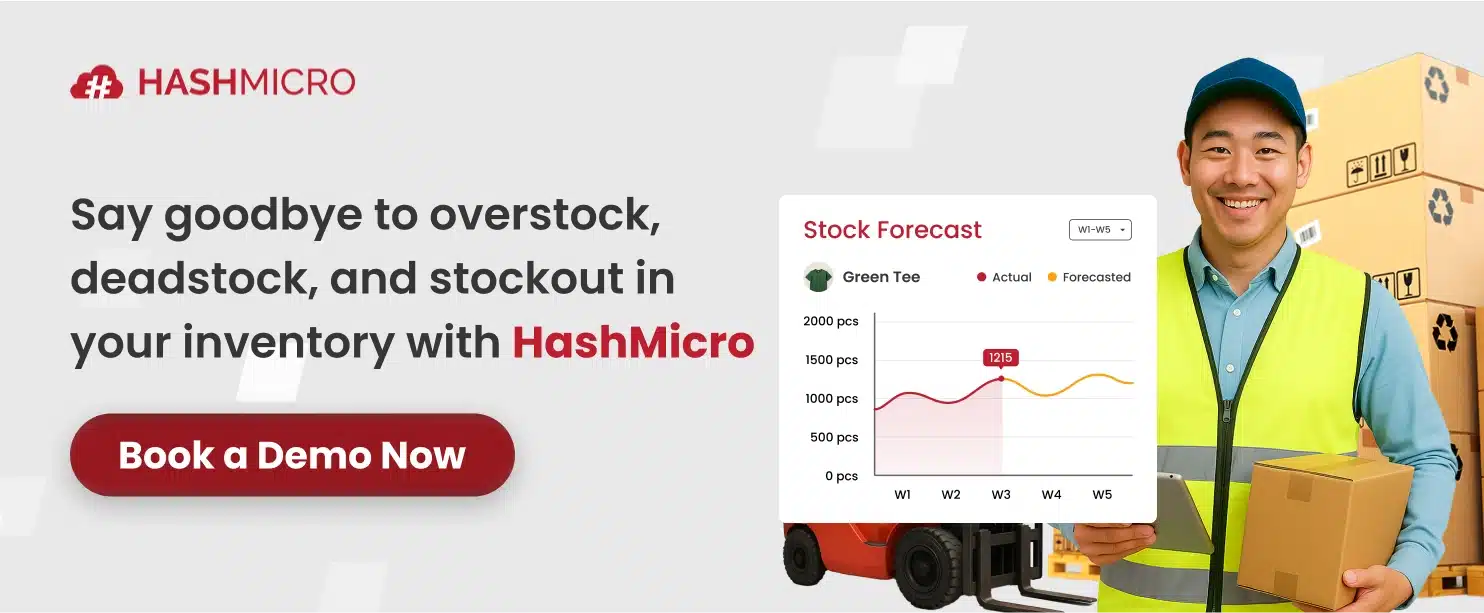
FAQ about Forecasting Models
-
Is ARIMA a forecasting model?
Yes, ARIMA (AutoRegressive Integrated Moving Average) is a popular forecasting model for time series. It predicts future values based on past data trends, making it ideal for data with trends or seasonality.
-
What is the 3-way forecast model?
The 3-way forecast model combines quantitative data, judgmental inputs, and management insights. By integrating these three elements, it provides a more comprehensive prediction, helping businesses make more informed decisions in dynamic environments.
-
What are the 4 principles of forecasting?
The four principles are:
1. Data Availability: Reliable data is crucial for accuracy.
2. Consistency: Using the same methods ensures reliability.
3. Error Management: Forecasts should account for potential errors.
4. Continuous Review: Regular updates ensure forecasts remain relevant -
What is the GARCH model for forecasting?
The GARCH (Generalized Autoregressive Conditional Heteroskedasticity) model is used for forecasting volatility in financial markets. It helps predict price fluctuations by analyzing past data to understand changes in volatility over time, crucial for financial forecasting.
-
Is LSTM better than ARIMA?
LSTM (Long Short-Term Memory) is a deep learning model that captures long-term dependencies, suitable for complex, non-linear data. ARIMA works well with simpler, linear patterns, but LSTM may outperform it in complex forecasting.

